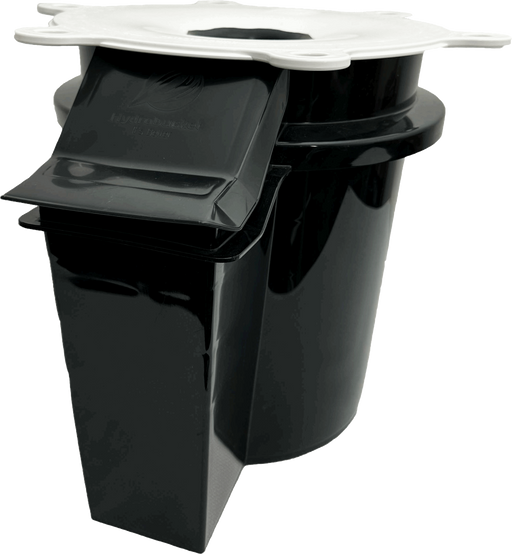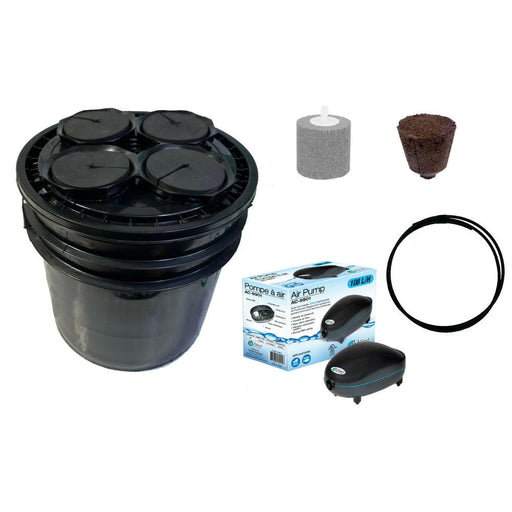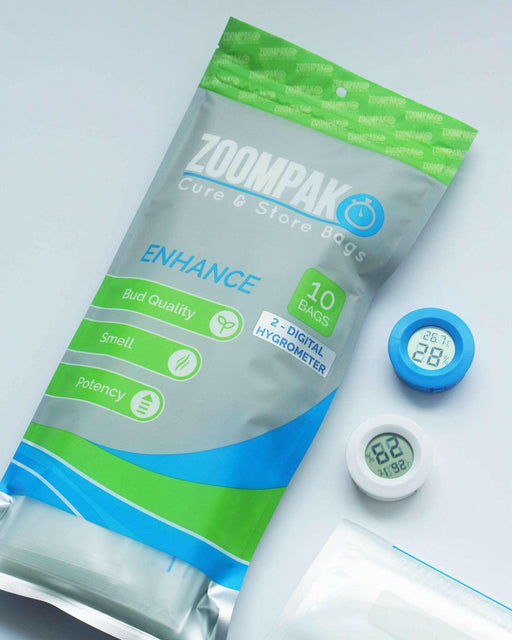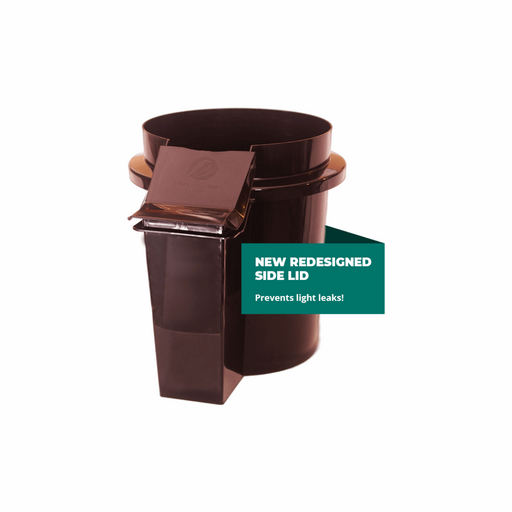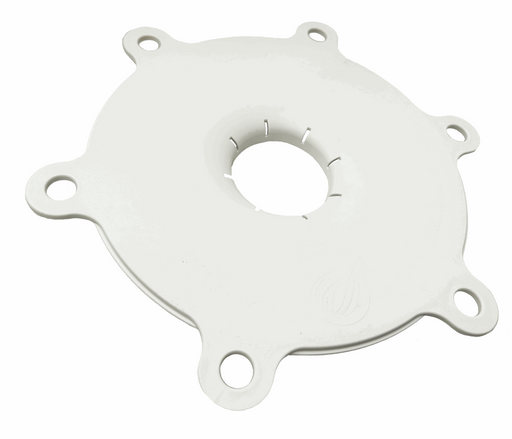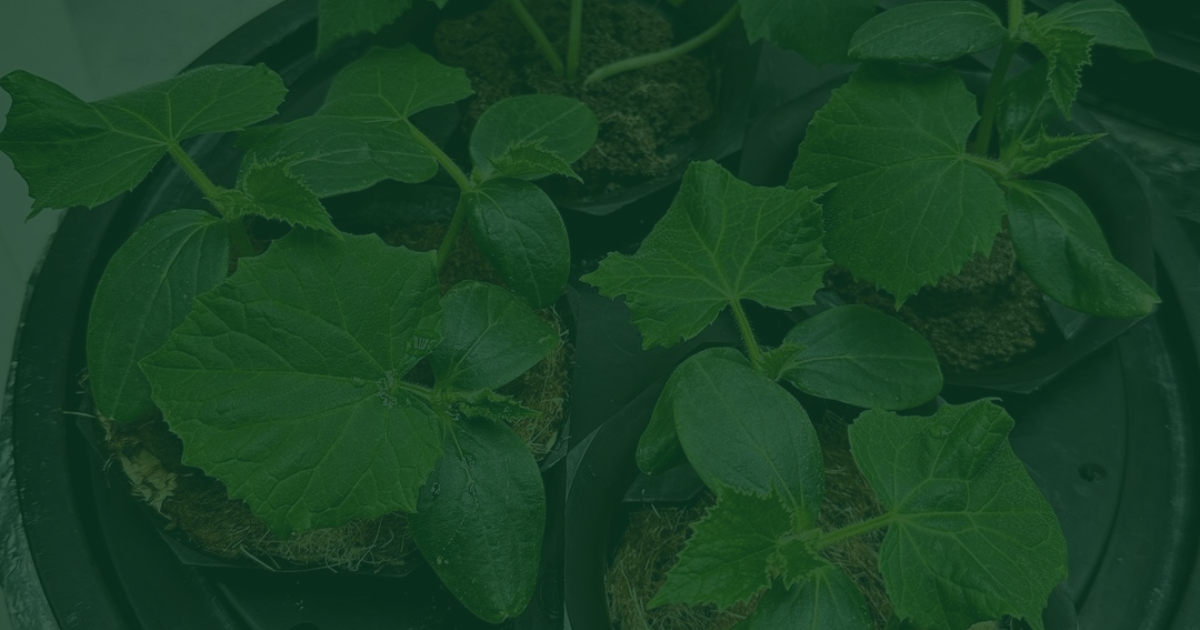
The Beginners Guide to Hydroponics Seed Germination
Are you looking for sustainable living and a way to grow your own medicine at home?
Hydroponic gardening is one of the most popular and new age methods for cultivating plants. And a significant aspect of this method is hydroponics seed germination, the process that kick-starts the growth of your indoor garden. But how exactly do you germinate seeds in a hydroponic system? Let’s explore.
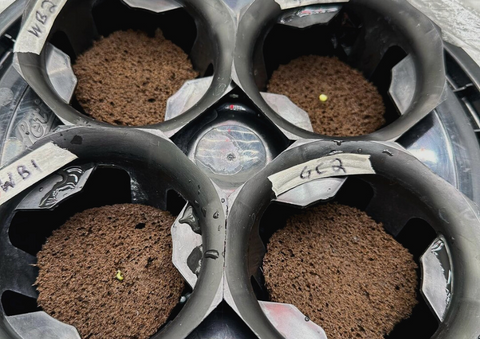
What is Hydroponic Seed Germination?
Hydroponic seed germination is the process of initiating the growth of seeds without soil, using a nutrient-rich water solution in a controlled environment. In hydroponics, seeds sprout and develop their initial roots directly in this nutrient solution or a special growing medium, ensuring faster and often more uniform germination compared to traditional soil methods.
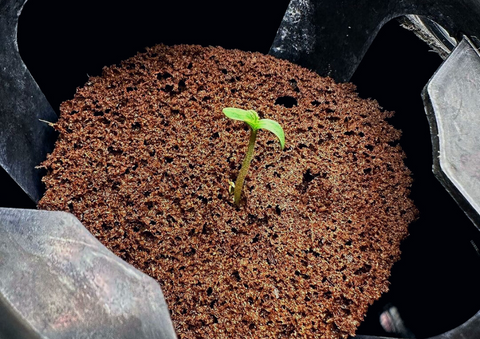
Insights into Hydroponic Seed Germination
Understanding the intricacies of hydroponic seed germination can significantly enhance your gardening experience. Unlike traditional gardening, where soil acts as a buffer for the seeds, providing them with nutrients, in hydroponics, seeds are directly exposed to the nutrient solution. This direct exposure means seeds get all their nutrients immediately without any hindrance, promoting faster growth. However, this also means the seeds are vulnerable to any imbalances in the nutrient solution, making it crucial to maintain the right pH and nutrient levels.
Another fascinating aspect is the importance of the growing medium in hydroponics. While soil provides a natural anchor for the roots in traditional gardening, hydroponic systems use mediums like coco coir, rockwool, and peat moss to offer similar stability. These mediums are designed to retain moisture while allowing for proper air circulation, providing the seeds with the perfect environment to sprout.
For those indoor growers making the transition from soil-based gardening to hydroponics, it's essential to understand these subtle differences to ensure a successful hydroponic garden.
How Do You Germinate Seeds in Hydroponics?
1. Choosing the Right Seeds
Not all seeds are created equal. When selecting seeds for hydroponics, consider:
- Obtain high quality seeds from a reputable source.
- For medical plants you must decide what you will be growing; Autoflower or Photoperiod plants
- Seeds come in two basic types; Regular seeds (male and female) or Feminized seeds (all female).
- Many new growers choose Feminized Autoflower seeds to begin with.
Buying high quality seeds that align with your intention and grow space will give you the best chance of success.
2. Preparation
Before starting seeds hydroponically, gather your materials. The HydroSeed system, for instance, provides:
- HydroPlugs and HydroPods: Essential for holding the seeds.
- Nutrient Solution: The lifeblood for hydroponic plants.
- Air Pump: Necessary for maintaining oxygen levels in the nutrient solution.
The ability to measure and adjust Ph is paramount for a successful grow. A quality digital meter along with ph up and ph down adjustment solutions will be needed.
3. Selecting a Growing Medium
While you can germinate seeds directly in a nutrient solution, using a growing medium can provide more stability. Options include:
- Rockwool: Popular starter cubes for hydroponics. They retain moisture well and the larger pieces are easily carvable to create the shape you need.
- Coco Coir or Coco Peat: Made from coconut husks, this medium offers excellent water retention and aeration.
- The ideal growing medium for hydroponics should be non shedding and inert.
4. Sowing the Seeds
When you're ready to sow seeds, follow these steps:
- Moisten the Growing Medium: Soak your medium in 6.0ph water for 1 hr. If using rockwool, it is recommended to use a rockwool conditioner product to make the rockwool ideal for the seedling.
- Soak seeds in water for 1hr to ensure they are hydrated, giving them the best chance for germination.
- Plant the Seeds: Sow one seed in each medium, no deeper than 1cm.
- Provide the Ideal Environment: Seeds need a warm moist environment. Consider using a heating mat to maintain the right temperature. You may also want to have your growing space (tent) set up and ready to go. A tent kept at 30C and 70%RH is perfect for seedlings.
- Cover your seedlings with a dome or plastic kitchen wrap to create the perfect microclimate for germinating seeds.
5. Monitor and Maintain
As your seeds start their germination period, remember:
- Begin with water only at a pH of 6.0. Once true leaves begin to develop, nutrients are required.
- Mix a nutrient solution to a strength of 300 ppm for the first few weeks.
- Water your seedlings and medium 2x per day in a Drain to Waste fashion.
- Do not keep the medium constantly saturated. This will halt germination and rot the seeds.
- Lighting: Low intensity lighting that is close to your seedlings is ideal. Seedlings that are stretching excessively are reaching for more light. Adjust accordingly.
- The light cycle should be 18hrs on and 6hrs off.
- Air Movement: Gentle air movement will create strong stems and healthy plants as well as providing balanced heat and humidity from the environment.
6. Transitioning seedlings to Deep Water Culture
Once your seedlings have roots emerging out the bottom of the medium it is time to get them over a DWC solution.
- Mix a nutrient solution of 300ppm at 5.8 - 6.0 ph and place your air stone in the fluid.
- The fluid level should be just below the bottom of the Hydropod, not touching the medium.
- Cease drain to waste watering method and place your seedlings in Hydropods above the newly made nutrient solution.
- Maintain fluid level and ph.
- Monitor the nutrient level strength (ppm) to ensure it is in range.
Common Questions about Hydroponics Seed Germination
Can I Germinate Seeds in a Hydroponic System?
Absolutely! Hydroponic systems are designed to provide all their nutrients and conditions that seeds need to germinate and grow.
How Long Does it Take for Hydroponic Seeds to Germinate?
The germination time varies based on the type of seed. Most seeds for hydroponics germinate within 7-14 days. However, it's essential to maintain temperature and moisture and keep a close eye on them.
Do Hydroponic Seeds Need Light to Germinate?
Some seeds require light, while others need darkness. It's crucial to research the specific requirements of the seeds you're germinating.
What should I use for my nutrient solution?
There are many brands and options for nutrients. Some companies offer a 1 part seedling solution though most offer a 2 part or 3 part that you mix in different ratios. The ratios with change as the stage of growth changes for your plant.
Avoid organic nutrients. They do not dissolve and create a biofilm that will lead to root issues and eventually root rot.
Fully dissolvable, Hydroponic nutrients are what you want to use. Both liquids and powders work well.
How do I keep my roots healthy?
Choose a product that will inhibit contamination and root rot. This can be an enzyme product like Hygrozyme or a sanitizing product like pool shock or H2O2.
Wrapping Up
Hydroponics seed germination is the first step in your journey into the world of indoor gardening.
By understanding the needs of your seeds and providing the right conditions, you can achieve impressive germination rates and set the stage for a thriving hydroponic garden.
Want to dive deeper into hydroponics? Check out our step-by-step guide to setting up your hydroponic system and exploring the best seeds for hydroponic growth.
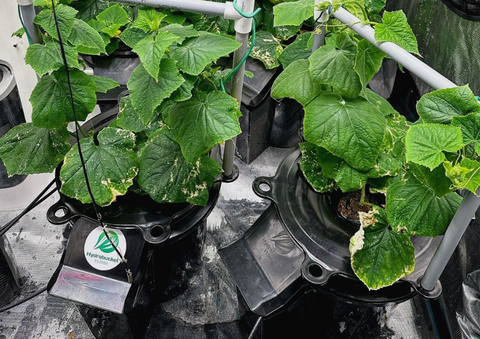
Embark on your hydroponic gardening adventure today!
Start Indoor Growing Today!
-
HydroCombo
Visionary HydroponicsOriginal price $76.45Original price $76.45 - Original price $76.45Original price $76.45Current price $57.34$57.34 - $57.34Current price $57.34Maximize your hydroponic gardening efficiency with the HydroCombo, an all-in-one solution for your Deep Water Culture needs. This high-quality comb...
View full detailsOriginal price $76.45Original price $76.45 - Original price $76.45Original price $76.45Current price $57.34$57.34 - $57.34Current price $57.34Save 25% -
HydroSeed
Visionary HydroponicsOriginal price $62.98Original price $62.98 - Original price $62.98Original price $62.98Current price $47.23$47.23 - $47.23Current price $47.23Simplify Starting Your Hydroponics Seedlings Introducing the HydroSeed, our all-in-one solution to go from seed to harvest effortlessly, and cultiv...
View full detailsOriginal price $62.98Original price $62.98 - Original price $62.98Original price $62.98Current price $47.23$47.23 - $47.23Current price $47.23Save 25% -
ZoomPak Cure & Store 1/2lb Bags
Visionary HydroponicsOriginal price $39.96Original price $39.96 - Original price $39.96Original price $39.96Current price $29.97$29.97 - $29.97Current price $29.97ZoomPak Cure & Store 1/2lb Bags - 10 Pack The ZoomPak Cure & Store Bags are designed for the discerning horticulturist seeking to pre...
View full detailsOriginal price $39.96Original price $39.96 - Original price $39.96Original price $39.96Current price $29.97$29.97 - $29.97Current price $29.97Save 25% -
HydroBucket
Visionary HydroponicsOriginal price $39.74Original price $39.74 - Original price $39.74Original price $39.74Current price $29.08$29.08 - $29.08Current price $29.08HydroBucket is the answer to your Deep Water Culture hydroponics needs.It streamlines your home growing experience, allowing you to focus on nurtur...
View full detailsOriginal price $39.74Original price $39.74 - Original price $39.74Original price $39.74Current price $29.08$29.08 - $29.08Current price $29.08Save 27% -
HydroLid
Visionary HydroponicsOriginal price $35.95Original price $35.95 - Original price $35.95Original price $35.95Current price $26.96$26.96 - $26.96Current price $26.96Premium Quality Hydroponic Lid for Optimal Fluid Movement and Plant Support The HydroLid is your essential tool for achieving optimal hydroponic gr...
View full detailsOriginal price $35.95Original price $35.95 - Original price $35.95Original price $35.95Current price $26.96$26.96 - $26.96Current price $26.96Save 25%

